Yes, there are more Japanese maples (Acer palmatum) in this garden than necessary, but there is no need to count. There are thirty, or forty-some, but this is not a contest, and certainly there are gardens with finer and more numerous maples. With plants, I can get a little stupid, but my obsession with Japanese maples is most evident in this acre and a quarter garden.

The front of the house is mostly obscured by two green leafed ‘Seriyu’ maples and a red leafed ‘Bloodgood’, and it’s not possible to see more than twenty feet in any direction in the rear garden without the view being blocked by one maple or several. The driveway is partially obstructed by a wide spreading maple (‘Crimson Queen’) with pendulous branches, with another (‘Oridono nishiki’) overhanging the end of the drive. A green leafed, weeping Japanese maple (‘Viridis’, below) forms a wide spreading canopy over one of the garden’s ponds, and so it goes, one after another. Many maples have been here for twenty years or more, with a few newcomers each year.

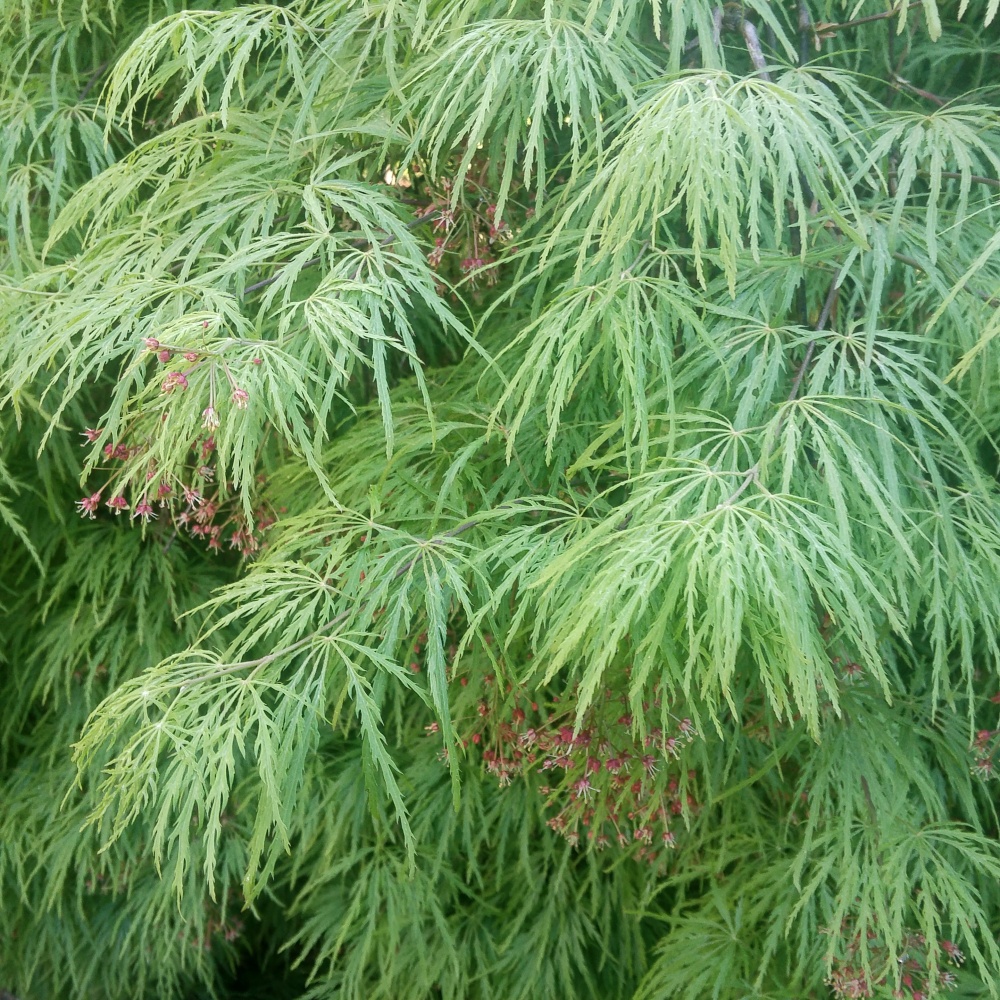
None of the maples in the garden are rare, though many are ones that are not commonly found in garden centers, and a few recent additions can be found only from nurseries that specialize in growing small numbers of the hundreds of less common Japanese maples. Certainly, several are cultivars that would not catch the eye of most gardeners, with foliage that is unremarkable, and I suppose it could be argued that leaves of a few maples are out of the ordinary to the point that some might consider them ugly. I don’t.

There are Japanese maples that I’ve paid a small fortune to obtain, though I am notoriously thrifty, and a few that were rescued from trash heaps. For years, I lusted after Golden Full Moon (Acer shirasawanum ‘Aureum’, above) and Floating Cloud (Acer palmatum ‘Ukigumo’, below) maples, and once one of each of reasonable size was obtained, two others soon became available and were added to the garden. No doubt, this is not a matter of proper garden design, nor of good sense. I suspect that I’m not the only gardener who’s gone off the deep end for something, maybe on multiple somethings as I have.


In early spring, I’m enthused as hellebores, witch hazels, and mahonias flower, followed by redbuds, serviceberries, dogwoods, and silverbells, but by mid April I must catch up on every Japanese maple in the garden, every day. With understated, but lovely blooms, and leaves that unfold over hours, or days, there is something to keep me entertained for weeks. Colors of emerging leaves are most intense, and while some maples open without much of a show, others stage a production as they slowly unfurl.
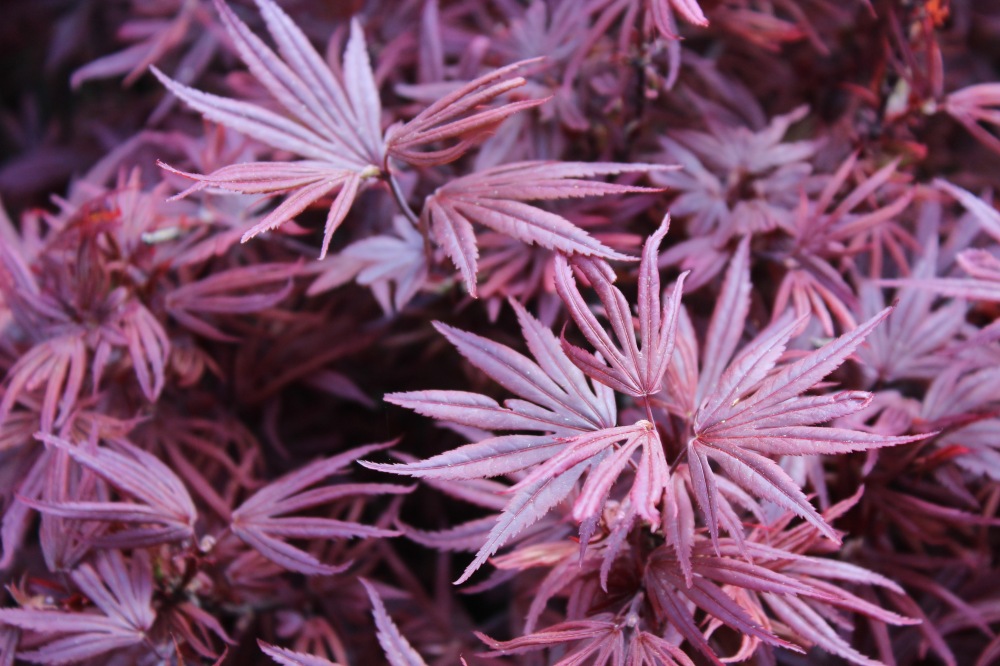

In recent years open space for planting has run short, so now the patios are cluttered with pots of newly acquired maples. Today, most are only a few feet tall, and with an exception or two all are trees that will grow only to eight or ten feet tall. There’s a possibility these could remain in containers for years, but if a hole opens up, they’re ready to fill in. Below are a sampling of Japanese maples in the garden, though not all.



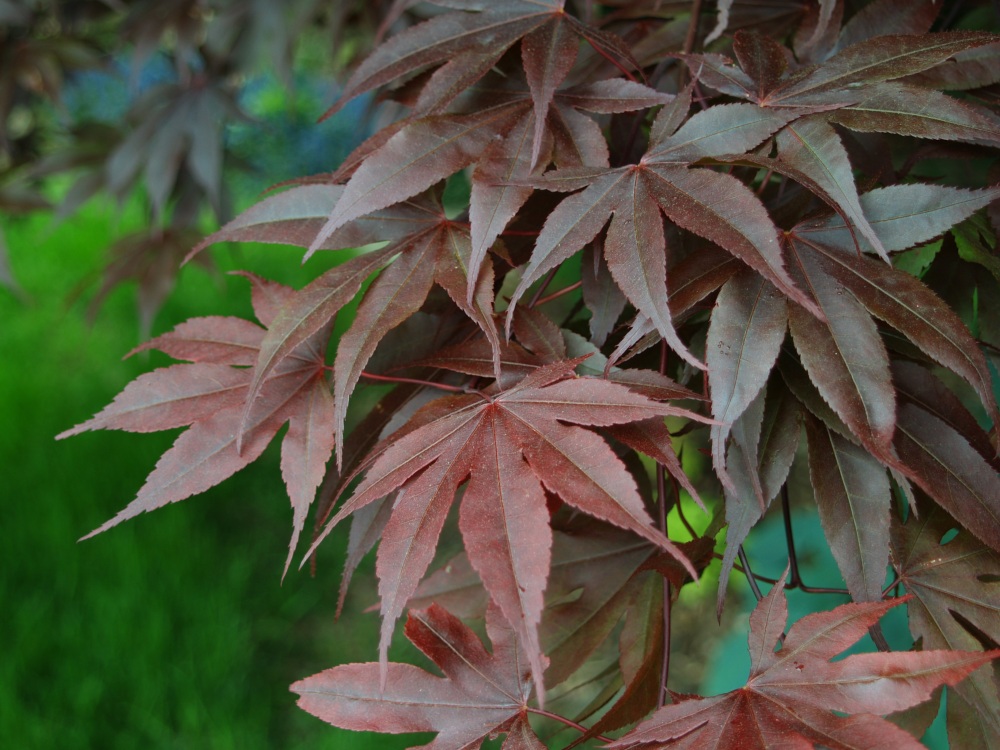
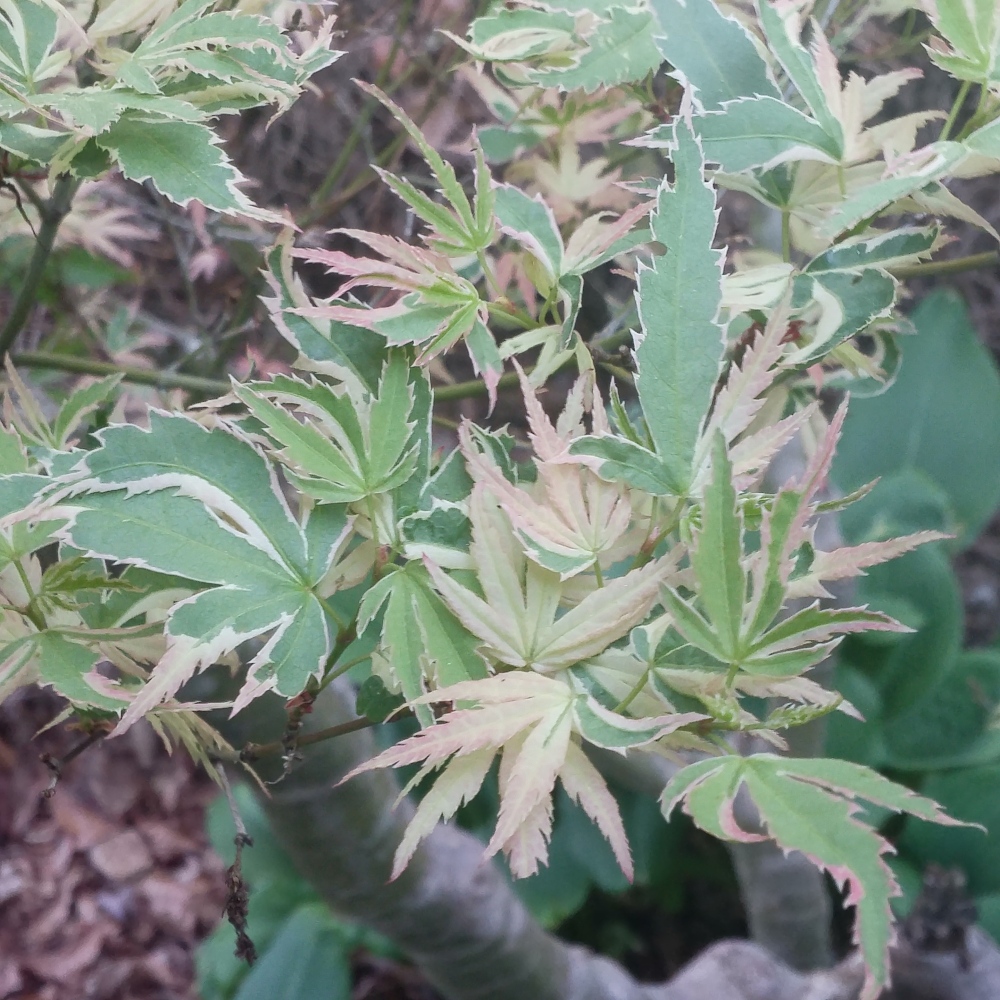

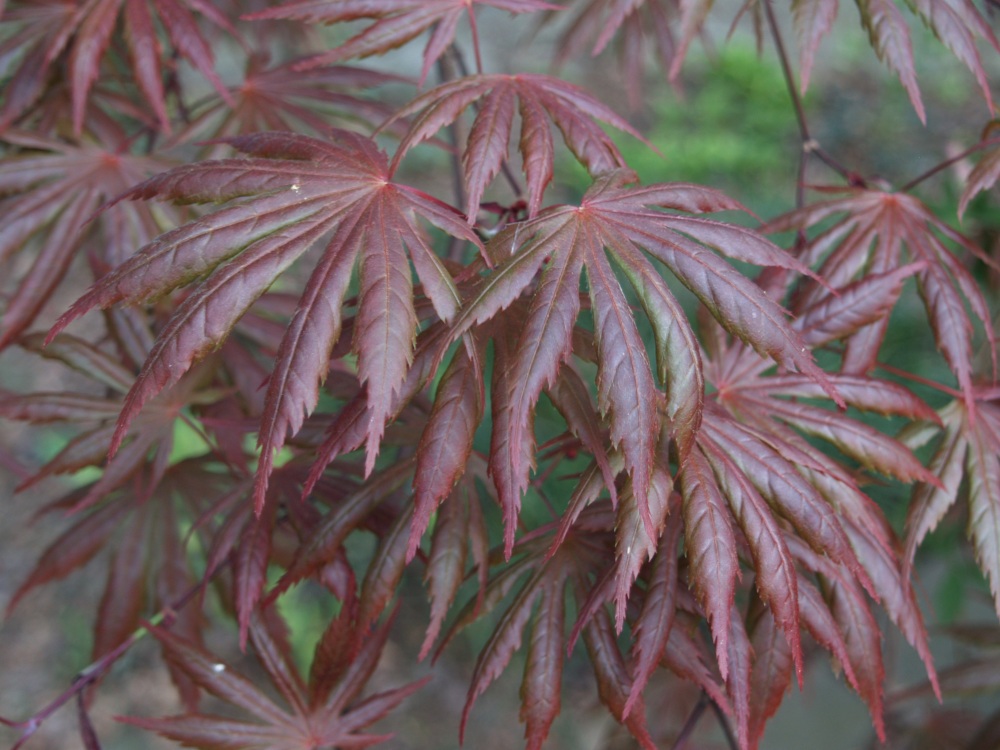


How do you care for your containerized Japanese maples during the winter?
As long as temperatures stay above zero I jam the pots together. I found the hard way that if temperatures drop to five or six below I need to move them into the garage. As plants grow and containers get larger and the trees are more difficult to move, it’s likely I’ll build a wire mesh cage around the pots and fill it with leaves
Thanks!
Dave,
You are certainly not alone in your love for Japanese maples. I adore them and have gradually been collecting a few ( 22) in this two-year-old garden. I have common ones and a few “rare” small ones that I bought early last spring at Eastwoods nursery in Washington Va. It’s possible they are close to where you are. They will be at the Mother’s Day plant fair at the Virginia Arboretum in May. Perhaps you may wish to take your wife there? Family members were shocked that I would pay $30 for an 8inch plant but I neither smoke nor drink and feel perfectly justified in satisfying my garden indulgence! I put the small Maples that I bought into the ground as soon as the earth got warm last year and they wintered very well as I mulched them heavily.
My large Newly transplanted Shirazz maple is the one I lost this year but a well-known garden center from which I purchased most of my plants has been very good about replacing plants that have died. They know how much it pains me to lose a Japanese maple. Thank you for the beautiful photos of Japanese maples. And of course your update on their progress.
The English gardener
I second the wonderful folks at Eastwoods Nursery in Little Washington, VA. Have been there several times & love browsing their inventory even if I don’t make a purchase. Lovely people with beautiful trees.
Eastwoods is close by. I’ve considered taking a run out there many times. My wife wouldn’t be shocked that I’d spend $30 for a small maple, and she wouldn’t view a trip to a nursery as a pleasant outing.
The drive up there – especially at this time of year – is worth the tip on its own. Maybe combining the lovely drive with a nice lunch out somewhere would sweeten the pot for your spouse? : )
Dave, do you ever prune your japanese maples? I have a crimson queen weeping maple that I am considering pruning. It is about 7 ft tall and close to 12 ft wide and growing wider each year. Any suggestions on how to prune so that it doesn’t ruin the looks. i don’t know where to start.
I rarely prune anything, but did spend a few hours this winter removing dead wood on the interior of Japanese maples. I have done slight pruning on the weeping maple that borders the driveway. The art is to remove select branches so that the form is not compromised, rather than using hedge shears. While weeping maples require pruning, standing back to take a look, then pruning the next branch, with the wide spreading Seriyu maple that overhangs the driveway I annually have to prune new growth that hangs down. This is a simple matter of pruning eighteen inches off all lower branches on that side of the tree.
I’ve seen highly maintained Japanese maples where the branch structure is nearly a work of art, but that’s a bit much for me. The maple that borders the driveway was once planted too close to the front walk. When it became a problem I decided it had to be transplanted. The tree was difficult to dig properly, so I hooked a chain around the roots and jerked it out with my car. Didn’t bother the tree at all, though this is far from the recommended method.